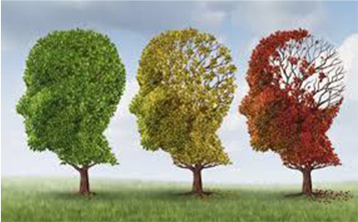Alzheimer's disease treatment

Alzheimer's disease is a disease characterized by a progressive cognitive decline and the development of behavioral disorders.
Alzheimers is the most common cause of dementia, developing in middle and old age. The first symptoms may appear even after 40 years, and after the age of 70, the incidence reaches 30%.
The early cognitive manifestations of the disease in some patients can be detected as early as 8 years before the diagnosis is established in the case of careful monitoring of the patient's condition and behavior in familiar surroundings. In this case, the most noticeable symptom is a memory disorder, which manifests itself in a person’s attempts to recall previously studied facts. Gradually, a person ceases to be oriented in place and time; at first, the memory of the events in the near future is violated, and then to more distant events, especially knowledge, experience, and skills. Attempts to recall previously studied facts and attempts to learn new information fail. Patient's recognition of shape, color, face, sense of orientation in space and time are impaired. Handwriting is changing, speech is becoming increasingly incomprehensible, semantic memory (memory associated with the meaning of words) is also violated. Planning, concentration and abstract thinking become almost impossible.
The factors that exacerbate the symptoms of Alzheimer's are an unfamiliar place, prolonged loneliness, meeting with a large number of unfamiliar people, darkness (which requires lighting even at night), infectious diseases, hot weather, taking a lot of drugs, etc.
People with high intelligence are less likely to get sick because they have more connections between nerve cells, and thus when some cells die, lost functions can be transferred to others that were not previously involved. Most often, the disease affects women (perhaps the reason is in longer life expectancy of women - many men simply do not reach the age of Alzheimer's disease).
Morphologically, it is shown in a decrease in the volume and weight of the brain due to the loss of neurons.

Risk factors for the disease:
- age after 60 years
- overweight, obesity
- a history of head injuries
- hypertonic disease
- oxidative stress
- electromagnetic radiation
- poisoning by aluminum
- the presence of the disease in close relatives
Alzheimer's disease is diagnosed by the following criteria:
- the imperceptible onset of the disease
- steadily progressive course
- the exclusion of all other causes of dementia
Today, Alzheimer's is considered incurable, and the only known treatment is symptomatic and aimed at eliminating depression, anxiety as well as improving memory and thinking; it is long-termed and does not always bring the desired improvement.
The purpose of treatment using fetal stem cells is restoring lost and damaged nerve cells, as well as correcting immunity. Fetal stem cells are the only source of stem cells of neuroectoderm - a source of nerve cells, and therefore they have the strongest potential for the regeneration of damaged neurons. Microimmunotherapy helps restore the body as a whole and is used as an auxiliary in the treatment of intercurrent diseases. The process of neuron regeneration begins slowly, gradually number of neurons increases and transmission of nerve impulses improves, resulting in regression of neurological symptoms and restoration of lost functions; this, in turn, significantly improves the life quality of the patient and his/her family. The success rate depends on the initial condition of the patient and is individual in each specific case.
After a course of stem cell therapy, the following improvements are expected:
 |
Improvement of behavior and responses to other people and the environment. |  |
Improvement of attention and ability to learn |
 |
Reduction of aggression and self-injury |  |
Improvement of social skills, including self-service |
